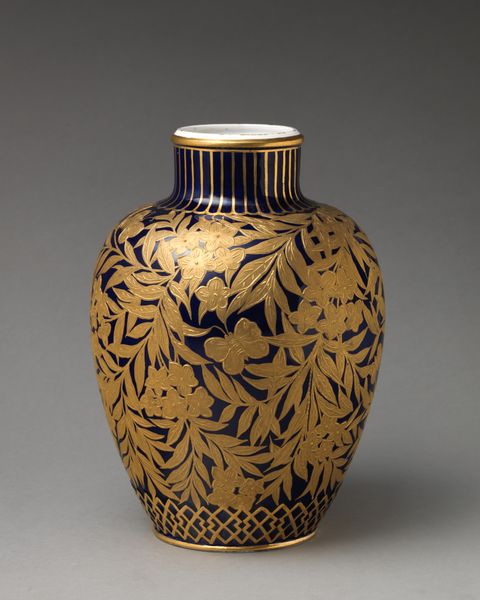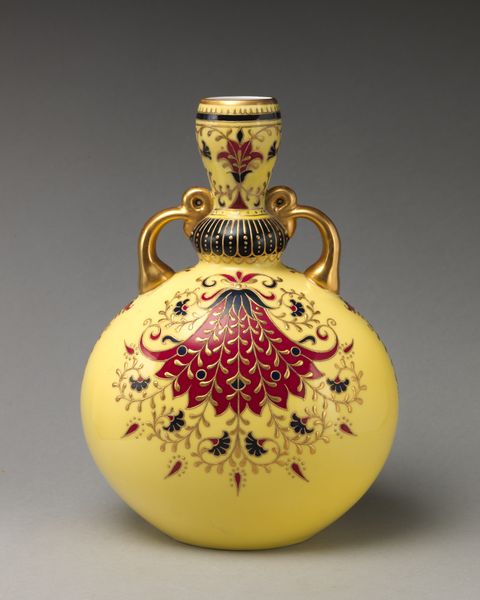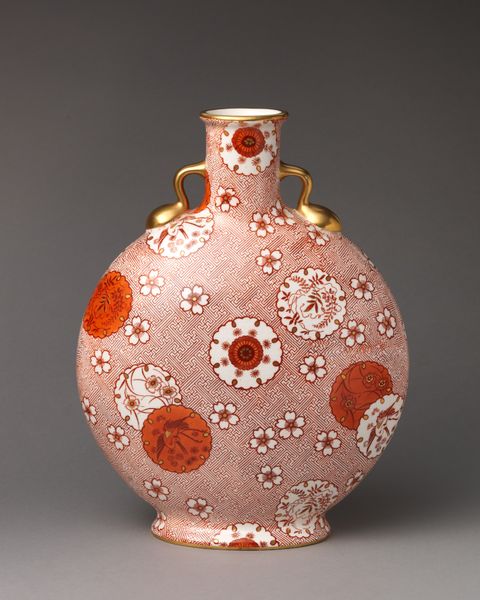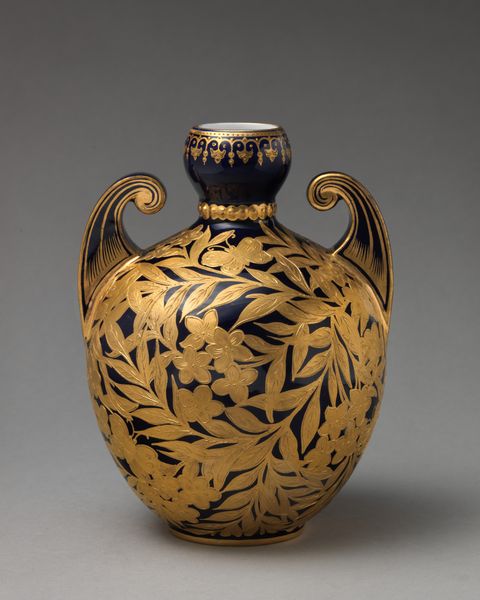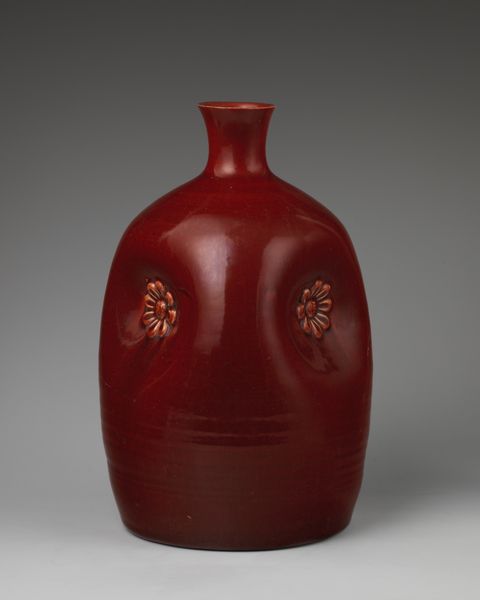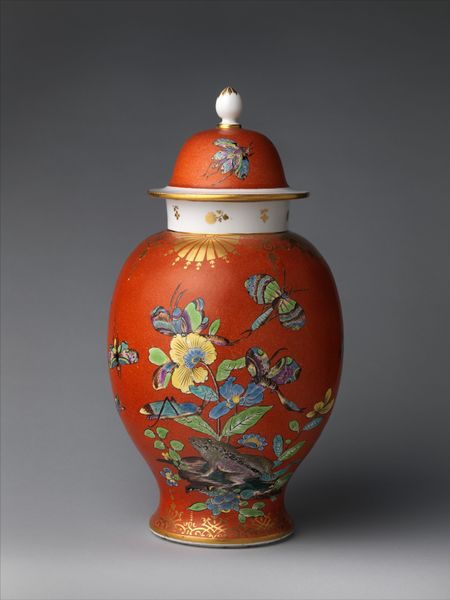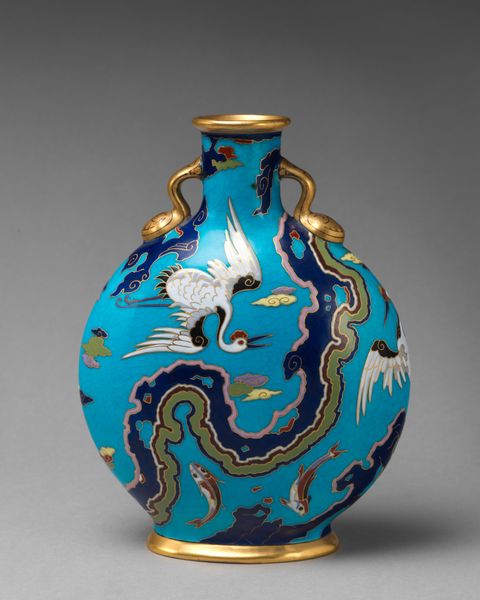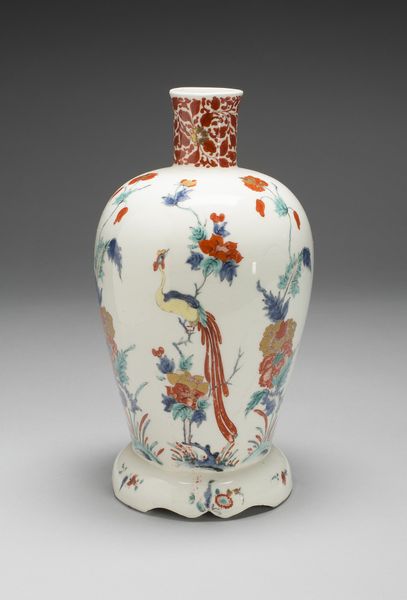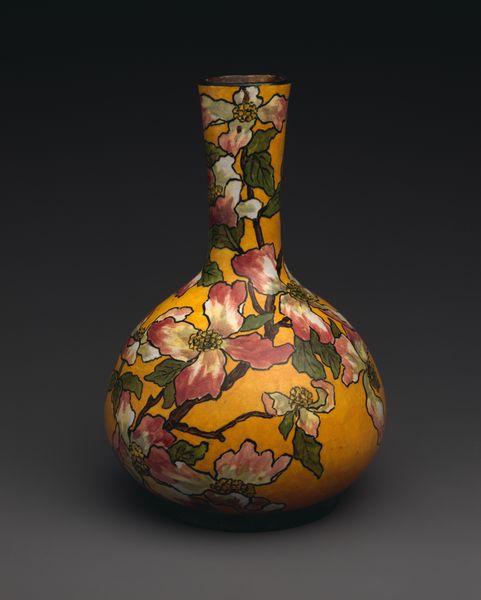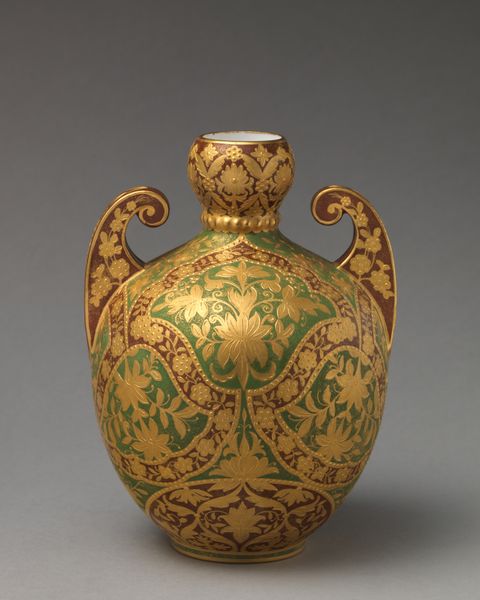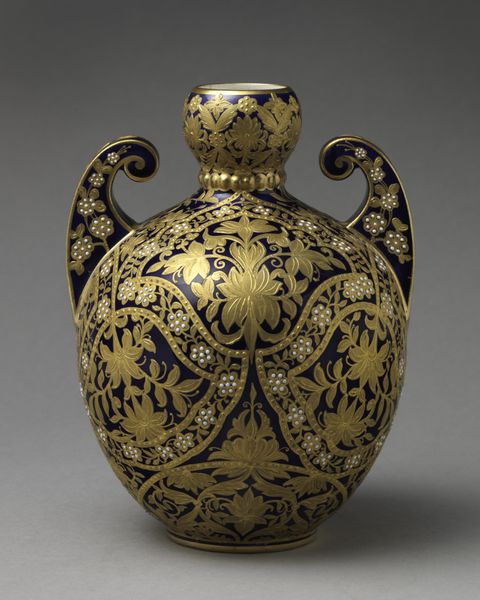
ceramic, porcelain, sculpture
#
asian-art
#
ceramic
#
porcelain
#
sculpture
#
ceramic
Dimensions: confirmed: 9 7/8 × 6 3/8 × 6 3/8 in. (25.1 × 16.2 × 16.2 cm)
Copyright: Public Domain
Editor: We’re looking at a porcelain Ginger Jar by Crown Derby, crafted around 1886 and currently held at the Metropolitan Museum of Art. It’s predominantly a striking red with elaborate golden detailing of flora and fauna. What strikes me is the opulent feel of it, almost imperial. What do you see in this piece that speaks to its historical moment? Curator: This jar is a fascinating example of the West's fascination with Asian art and design during the late 19th century. It showcases what was then considered an "exotic" aesthetic, specifically borrowing motifs commonly associated with Chinese porcelain. How do you think museums played a role in shaping this cross-cultural artistic exchange? Editor: Museums, as I understand, were essential in displaying artifacts and art from around the world, educating the public and, inadvertently or not, influencing artistic tastes and production. It’s interesting how the object is both functional and a statement piece. Curator: Exactly. It's crucial to understand how Western consumers at the time would have perceived such an object. These objects spoke to wealth, taste, and worldly knowledge. And Crown Derby, like many manufacturers, capitalized on that fascination, catering to a market eager to display their refinement through possessing such works. Editor: So it’s about signaling social status. What I'm gathering is it wasn't just about appreciating art, but about projecting a specific identity tied to class and access to cultural capital. Curator: Precisely! Furthermore, it also reflects a specific power dynamic where one culture appropriates the visual language of another, often without fully understanding or respecting its original context. Editor: This conversation reframes the Ginger Jar for me. It’s less a celebration of cultural exchange and more a complex marker of historical power dynamics expressed through art and consumerism. Curator: I agree. Looking at objects through this lens of historical power helps us deconstruct them beyond just aesthetic appreciation and see the broader societal influences.
Comments
No comments
Be the first to comment and join the conversation on the ultimate creative platform.

